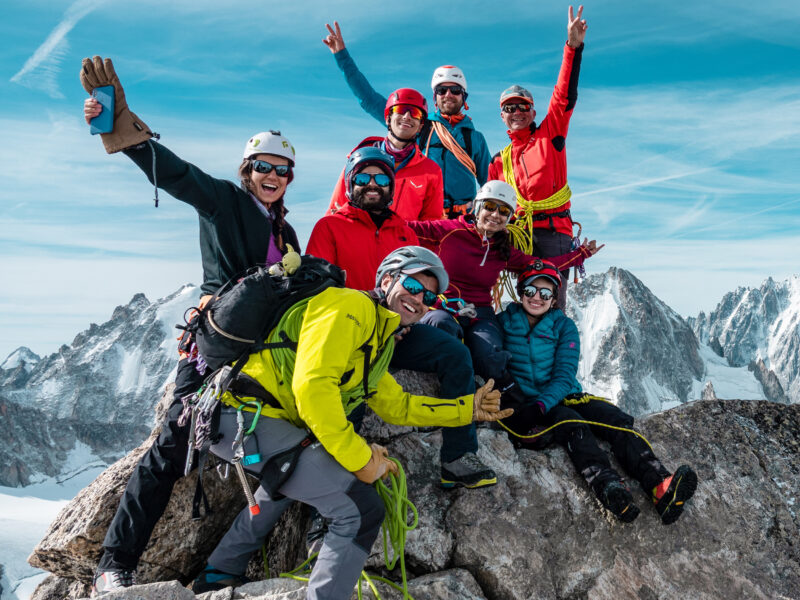BY Rami Rasamny | October 10 2024
Should I Take Diamox on Kilimanjaro?

Using Diamox on Kilimanjaro is a decision that sits at the heart of a polarized debate within the mountaineering community. The online discussions are largely populated by individuals who have climbed Kilimanjaro once as clients, while the voices of professionals who operate regularly at high altitudes are a minority. These professionals, often the least likely to engage online regularly due to their lifestyle and work locations, tend to have their voices drowned out in the debate.
Understanding Altitude and Its Effects
At high altitudes, the air pressure is lower, meaning oxygen molecules are less densely packed. This results in each breath delivering less oxygen compared to sea level, which affects the body significantly. The body compensates by producing more red blood cells to transport the available oxygen more efficiently. This process consumes more calories and increases the risk of dehydration, often causing fatigue and headaches.
Altitude Sickness and Its Management
Altitude sickness occurs when the body reacts negatively to the reduced oxygen levels at high altitudes. Symptoms can range from mild to severe, including high altitude cerebral edema (HACE) and high altitude pulmonary edema (HAPE), which can be life-threatening. The best treatment for mild symptoms includes hydration, food, and rest, while severe cases require immediate descent to a lower altitude.
Role of Diamox
Diamox (acetazolamide) does not cure altitude sickness but can be highly effective in preventing and treating symptoms, particularly HAPE. It works by reducing the buildup of fluid in the lungs and aiding in acclimatization. However, it is important to note that Diamox is a diuretic, which increases urine output and can contribute to dehydration—a primary concern at high altitudes.
Professional Use and Recommendations
Professionals carry Diamox as part of their medical kit but use it strategically. The primary goal is to acclimatize naturally through rest, hydration, and proper nutrition. Diamox is typically used when symptoms of altitude sickness become concerning and descending is not immediately possible. It allows climbers to manage symptoms and descend safely to lower altitudes where the body can recover.
Our Recommendation
Our recommendation is not to take Diamox on Kilimanjaro. We believe it is counterproductive, and due to the large amounts of water needed to use it safely, it is unrealistic to consume Diamox safely on Kilimanjaro. Proper acclimatization and hydration are more effective and manageable strategies for most climbers.
Pre-Medication Considerations
While some climbers are advised to pre-medicate with Diamox, it is crucial to consider the dehydration risk it poses. Before starting Diamox, climbers should discuss with their doctor the importance of hydration and the potential impact of Diamox’s diuretic properties. Understanding that dehydration is a leading cause of summit failure and illness can influence the decision to use Diamox preventively.
Final Advice
Always consult with a healthcare provider before deciding to use Diamox. Individual health conditions and responses to high altitude vary, making personalized medical advice essential. This approach ensures that climbers make informed decisions tailored to their specific health needs and climbing conditions.
In conclusion, while Diamox can be a valuable tool in managing altitude sickness, it should be used judiciously, with a thorough understanding of its effects and limitations. Proper acclimatization, hydration, and medical consultation are key to a successful and safe ascent of Kilimanjaro.
About The Author
Rami Rasamny is the founder of Life Happens Outdoors, a premium adventure travel community dedicated to transforming lives through curated outdoor experiences. A mountaineer and entrepreneur, Rami has led teams on some of the world’s most challenging peaks, from the Alps to the Himalayas. His mission is to make adventure accessible, transformative, and safe for all who seek to push their limits and Come Back Different.
About Life Happens Outdoors
At Life Happens Outdoors, we believe in the power of nature to transform lives. As proud members of the Adventure Travel Trade Association (ATTA) and the World Travel & Tourism Council (WTTC), our team of certified guides and outdoor professionals is committed to the highest standards of safety, sustainability, and excellence.
Discover more about our story and mission on our Meet LHO page, or explore our curated adventures such as the Tour du Mont Blanc Trek, the Climb of Kilimanjaro, and Chasing the Northern Lights.














